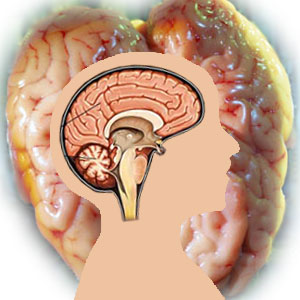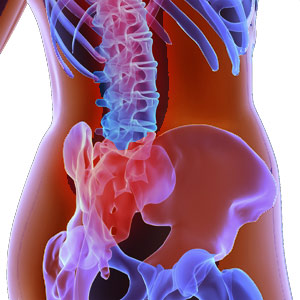Cerebral Palsy

Also referred to as CP, cerebral palsy is a neurological disorder that shows up during infancy or in early childhood thus affecting body movement and muscle coordination permanently. The condition once developed does not get worse over time as this is a non progressive disease. Though the muscles are affected due to cerebral palsy, it is not the muscles or the nerves that cause cerebral palsy.
It is caused due to defect in the part of the brain that controls the muscle movements. Studies prove that people from the Asian subcontinent and in particular people from South India and Srilanka are exceedingly prone to cerebral palsy. The high melanin content in the skin permits light to mutate genes that speed the onset of the disease. Check out the symptoms of cerebral palsy and possible causes. Read on to learn more about spastic cerebral palsy and the pathophysiology of cerebral palsy.
Cerebral palsy signs and symptom
Cerebral palsy can usually be identified before the child reaches three years of age. In severe cases the disorder can be identified even before the child is three months old. The symptoms for cerebral palsy vary from individual to individual. Typical symptoms of cerebral palsy:
- Ataxia - Nil coordination of muscles when performing voluntary movements
- Spasticity - Stiff or tight muscles and overstressed reflexes
- Walking on toes
- Walking with one foot or dragging the leg
- Difficulty in balancing
- Crouched, unsteady or scissored gait
- Muscle tone is too stiff or too limp
- Few children develop cerebral palsy as a result of infection in the brain such as bacterial meningitis in the early months after birth.
- Children born with severe cerebral palsy tend to have unbalanced posture and their bodies are either too stiff or too limp. Spinal curvature, small jawbone, small head, etc are birth defects that follow this condition.
- These symptoms can either become severe or remain the same or change as the child grows older.
- Conditions such as spasms, seizures, epilepsy, speech disorders, sensory impairments, mental retardation, learning disabilities etc also called secondary conditions are common.
- Cerebral palsy also occurs in children who have experienced head injuries and in children who have been abused.
Cause of cerebral palsy
The cause for cerebral palsy has not yet been found, over years doctors have been debating on this issue and have been left clueless. This defect is associated with not just a single disorder but involves a set of disorders. The most common causes for cerebral palsy are listed below:
- Premature babies are highly prone to cerebral palsy.
- Babies who undergo asphyxia and birth trauma too suffer from this disorder.
- After birth if the baby does not cry within the first five minutes and is kept in ventilator for more than four weeks or if the baby has bleeding in the brain then chances of this infection are high.
- Multiple births might result in low birth weight babies thus inducing this disorder
- Particular types of infection in the mother during and before birth lead to this disorder in the baby.
- During birth if the baby is in breech position thus making delivery tough or use of analgesics during delivery or rupture of amniotic membrane consequently leading to infection can cause this disorder.
- During childhood if the child experiences a fall/accident or if affected by meningitis, head injuries or hemorrhages can cause cerebral palsy.
- The exact cause for cerebral palsy in each individual case cannot be clearly defined.
Cerebral palsy treatment
Cerebral palsy has no permanent cure but treatment will enhance the child's ability. Early treatment helps manage developmental disabilities and aids in learning better methods to complete any task that challenges the person. If cerebral palsy is handled appropriately, children affected can grow up to lead near-normal lives. Various treatments offered for people suffering from cerebral palsy include
- Speech therapy - control over muscles in the mouth, helps deal with children's eating and speech problem
- Physical and occupational therapy - Helps maximize the functions and accept the individuals limitations and helps gain more confidence to live independently
- Drugs that help control seizures, relax muscle spasms and ease pain
- Orthotic devices such as braces
- Wheel chairs, rolling walkers
- Surgery to correct anatomical deformities and to help free tight muscles
- Communication aids such as computers that have attached voice synthesizers.
Spastic cerebral palsy
The most common type of cerebral palsy is spastic cerebral palsy; about 50% of cerebral palsy diagnosed is of this kind. Main features of spastic cerebral palsy:
- Constraint in the movements of the limbs and this condition occurs when the cerebral cortex is damaged.
- The word spastic means stiffness in muscles; the muscles become stiff and rigid thus making the even simplest movements hard and shaky.
- Grabbing any object, letting it go or even shifting positions become very difficult due to stiffness in the muscles.
- Muscles that are spastic contract at the same time thus making it hard for the muscles to move freely.
If spastic cerebral palsy is mild it affects only a few muscles whereas if it is severe it affects the whole body. Depending on the severity of the disorder different limbs are affected in different people.
- Spastic monoplegia - one limb is affected usually the arm
- Spastic diplegia - either the arms or the legs are affected, when both the legs are affected the appearance of the legs is like scissors and is called scissors gait.
- Hemiplegia - one side of the body is affected
- Spastic triplegia - three limbs are affected
- Spastic double hemiplegia - muscles on both sides of the body are stiffened
- Spastic tetraplegia - trunk, head and both sides of the body are affected and this makes movement difficult and at times movement is just not possible
Pathophysiology of cerebral palsy
Cerebral palsy is caused when the premature brain in the baby is abused either before birth, during the birth process or in the postnatal period. When the higher brain centers are abused it leads to cerebral palsy, abuse to the cerebral cortex/corticospinal tracts cause spastic cerebral palsy. Abuse to the cerebral cortex leads to contraction of the muscles and if the basal ganglia are abused, posture of a person and the automatic movements of the body is affected. Abuse to the cerebellum leads to balancing disorders, tremors etc.
Top of the Page: Cerebral Palsy
Tags:#cerebral palsy #cerebral palsy symptoms #cause of cerebral palsy #cerebral palsy treatment #spastic cerebral palsy #pathophysiology of cerebral palsy
Stress and Brain Damage
Lewy Body Dementia
Pervasive Development Disorders
Sinus Infection
Computer Vision Syndrome
Lasik Eye Surgery
Xerophthalmia
Dry Eye Syndrome
Peripheral Neuropathy
Cerebral Palsy
Migraine Headache Symptom
Low Blood Sugar Headache
Dizzy Spells
Tinnitus
Oral Hygiene
Halitosis
Treatment for Gingivitis
Neck Pain Causes
Whiplash Injury
Other health topics in TargetWoman Women Health section:
General Women Health

Women Health Tips - Women Health - key to understanding your health ...
Cardiac Care
Women's Heart Attack Symptoms - Identify heart problems...
Skin Diseases
Stress Hives - Red itchy spots ...
Women Disorders
Endocrine Disorder - Play a key role in overall wellbeing ...
Women's Reproductive Health
Testosterone Cream for Women - Hormone replacement option ...
Pregnancy
Pregnancy - Regulate your lifestyle to accommodate the needs of pregnancy ...
Head and Face
Sinus Infection - Nearly 1 of every 7 Americans suffer from ....
Women and Bone Care

Slipped Disc - Prevent injury, reduce pain ...
Menstrual Disorders
Enlarged Uterus - Uterus larger than normal size ...
Female Urinary Problems
Bladder Problems in Women - Treatable and curable ...
Gastrointestinal Disorders
Causes of Stomach Ulcers - Burning feeling in the gut ...
Respiratory Disorders
Lung function Test - How well do you breathe ...
Sleep Management

Insomnia and Weight Gain - Sleep it off ...
Psychological Disorders in Women
Mood swings and women - Not going crazy ...
Supplements for Women
Women's Vitamins - Wellness needs...
Natural Remedies

Natural Diuretic - Flush out toxins ...
Alternative Therapy
Acupuncture Point - Feel the pins and needles ...
Top of the Page: Cerebral Palsy
Popularity Index: 100,938

